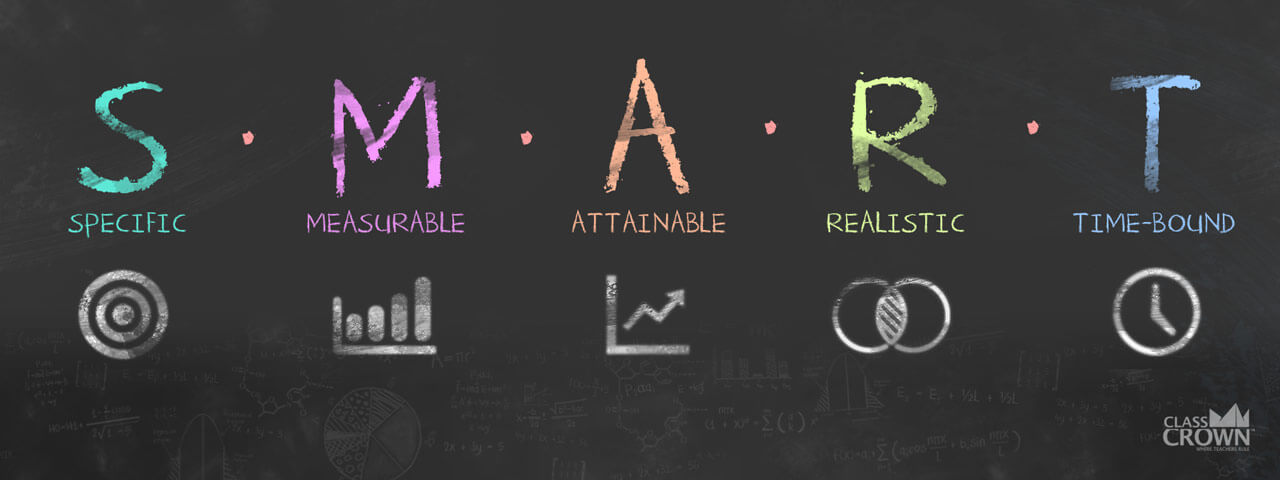
Motivation. Teachers know that the success or failure of a student depends mainly on motivation. Helping students set goals to do better on assignments, tests, etc. is one way to help them gain motivation and create a plan for improving their performance.
However, simply having students write vague goals such as, “I will do better on my next math test,” or “I will improve my chemistry grade this year,” will not be helpful. In order for a goal to be motivating it must have certain characteristics. One useful acronym for setting a good goal is SMART (Specific, Measurable, Attainable, Realistic, Time-bound). See our FREE SMART Goal Template for setting SMART Goals at the end of this post.
Poor Goal Example: I will improve my algebra grade by doing better on the tests.
SMART Goal Example: I will earn an 85% or better on my next algebra test, February 15.
Let’s examine each of these characteristics in more detail:
Continue reading

